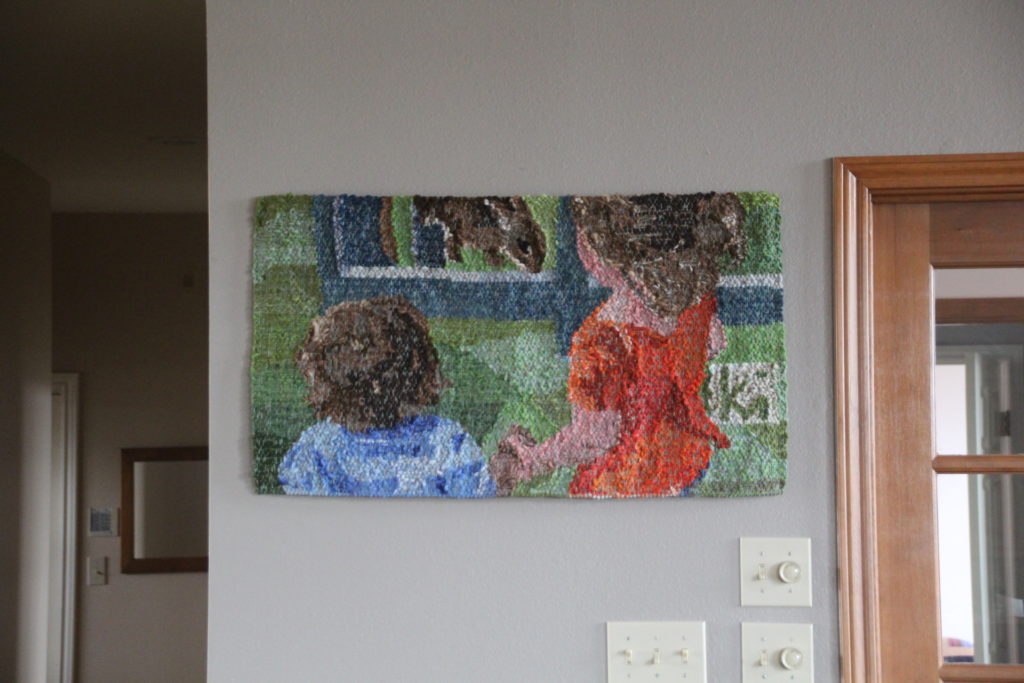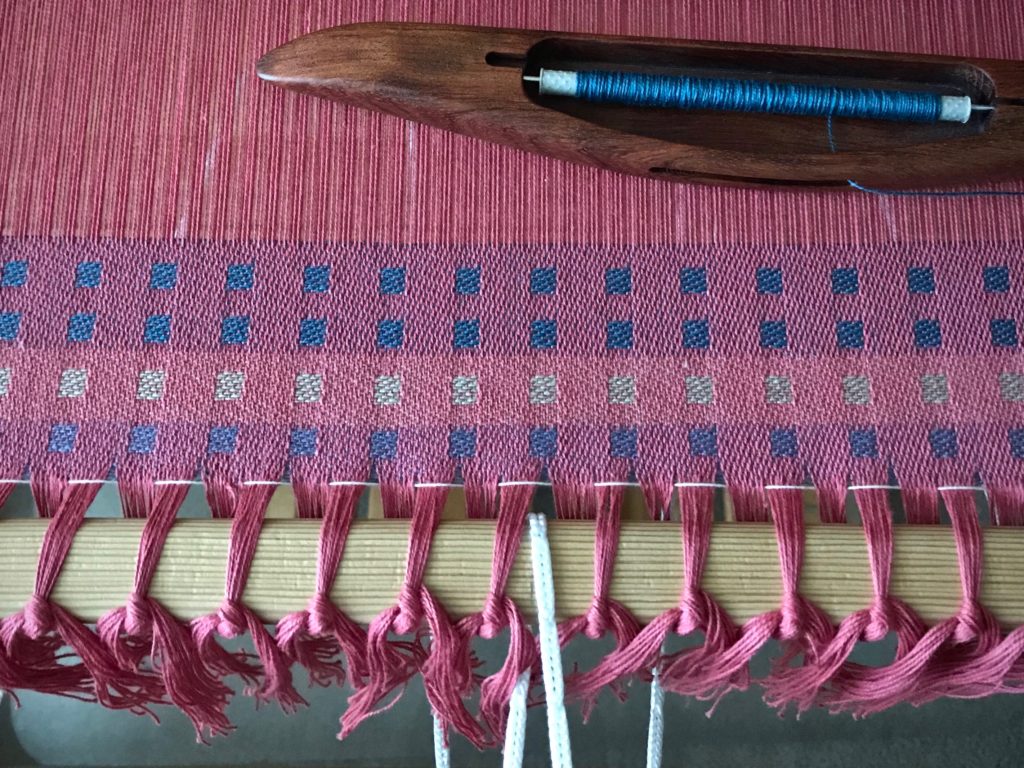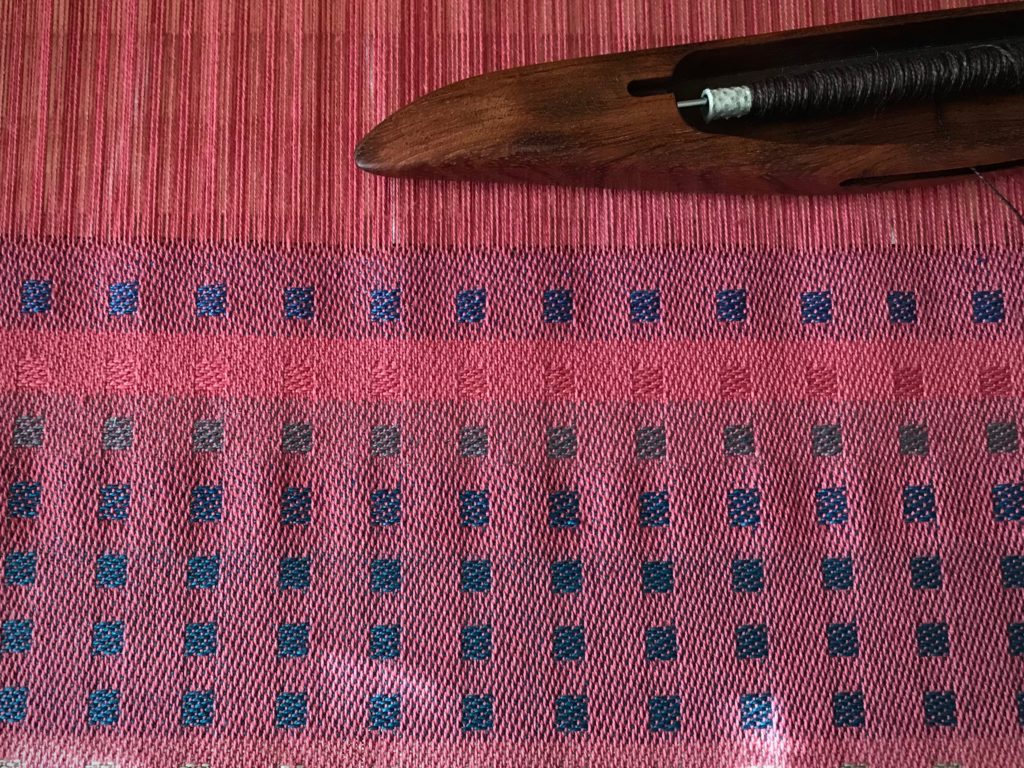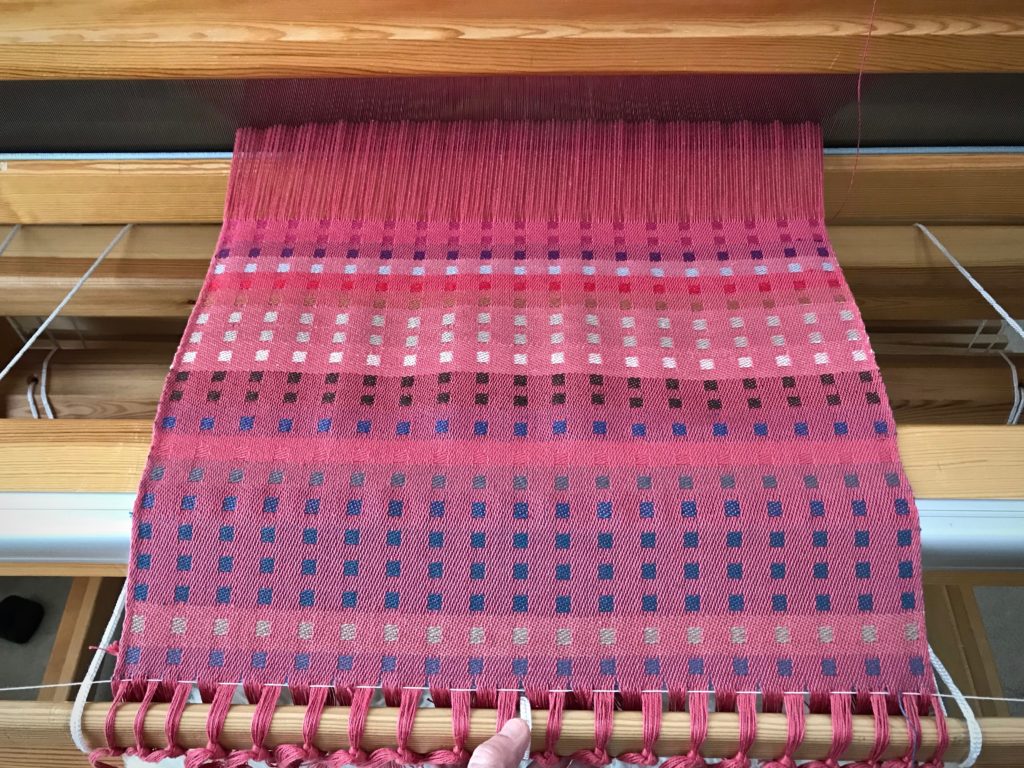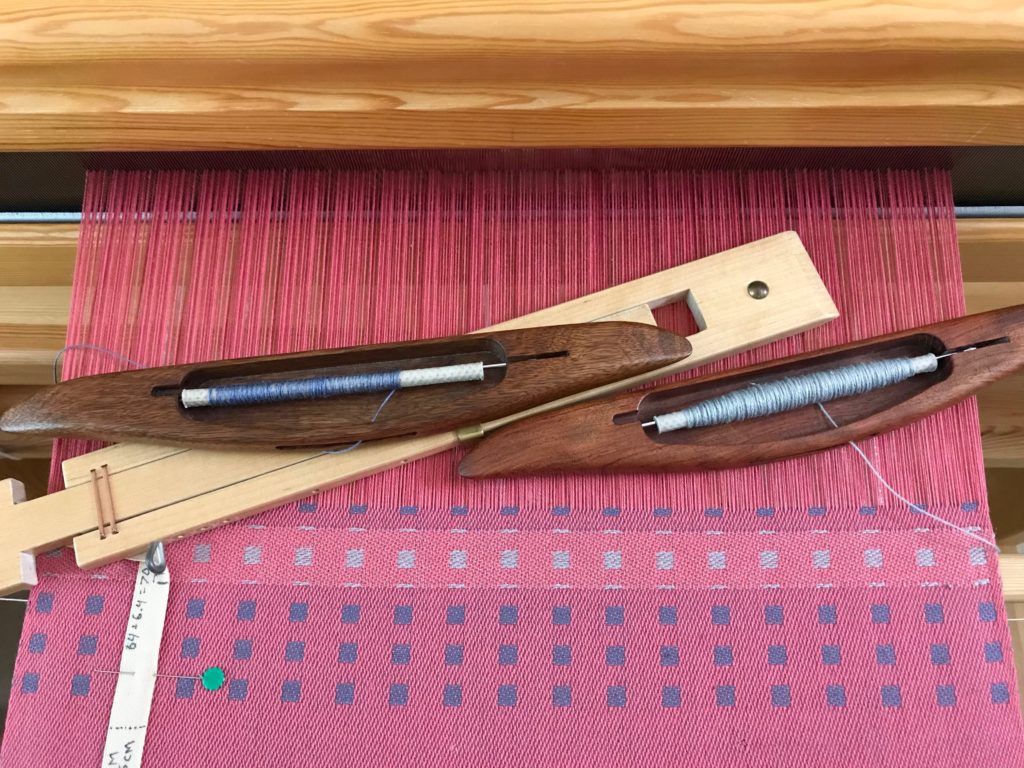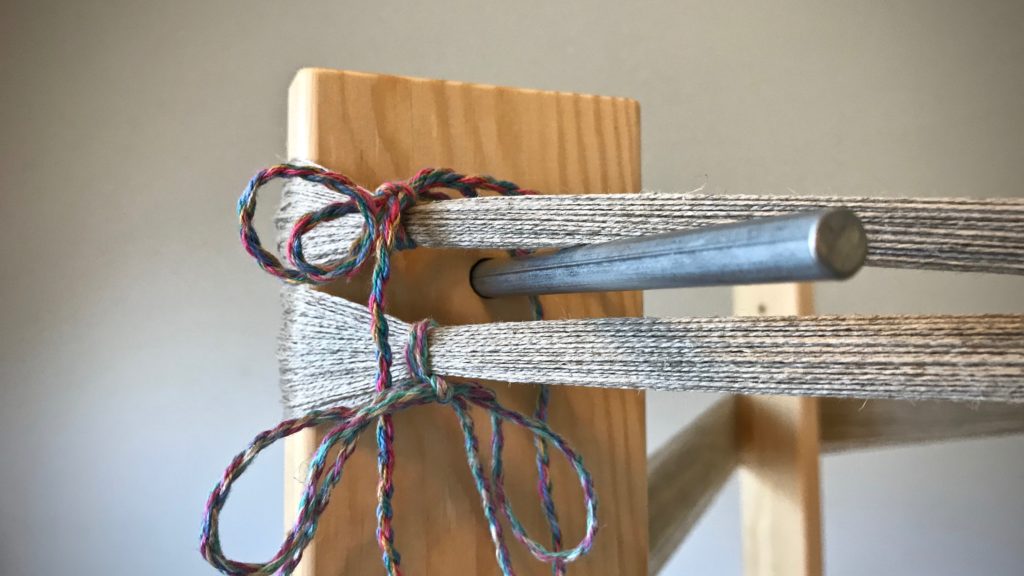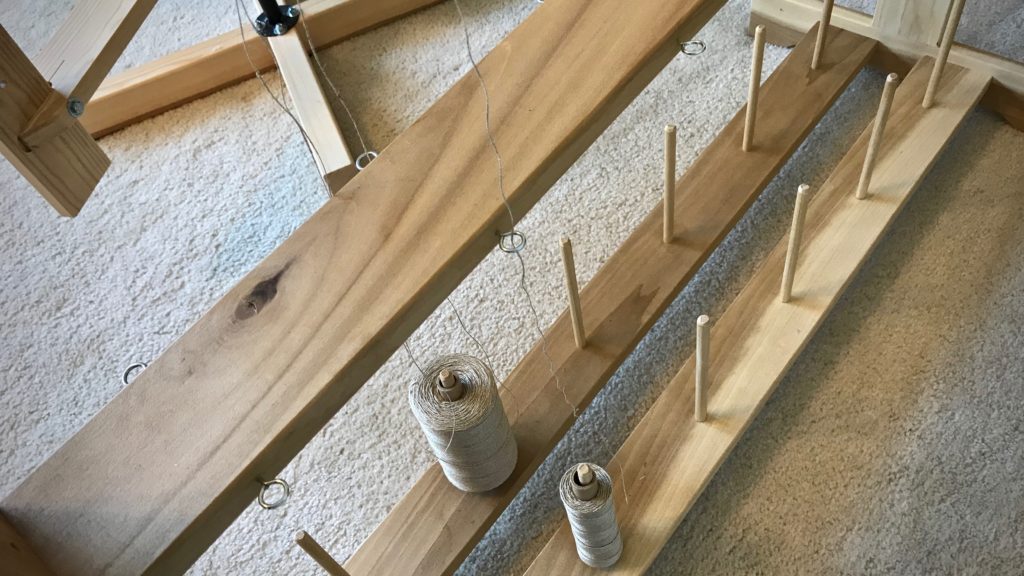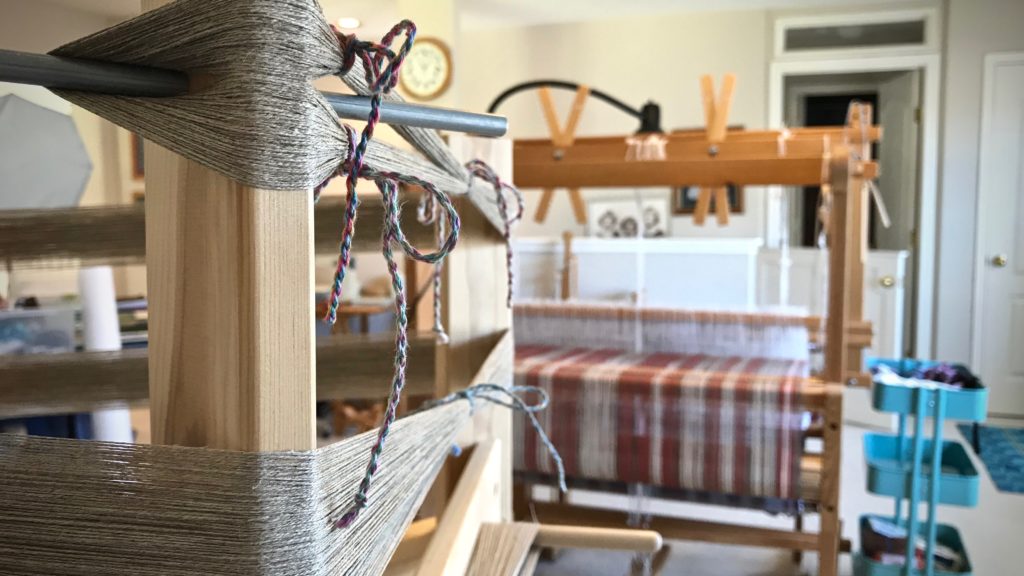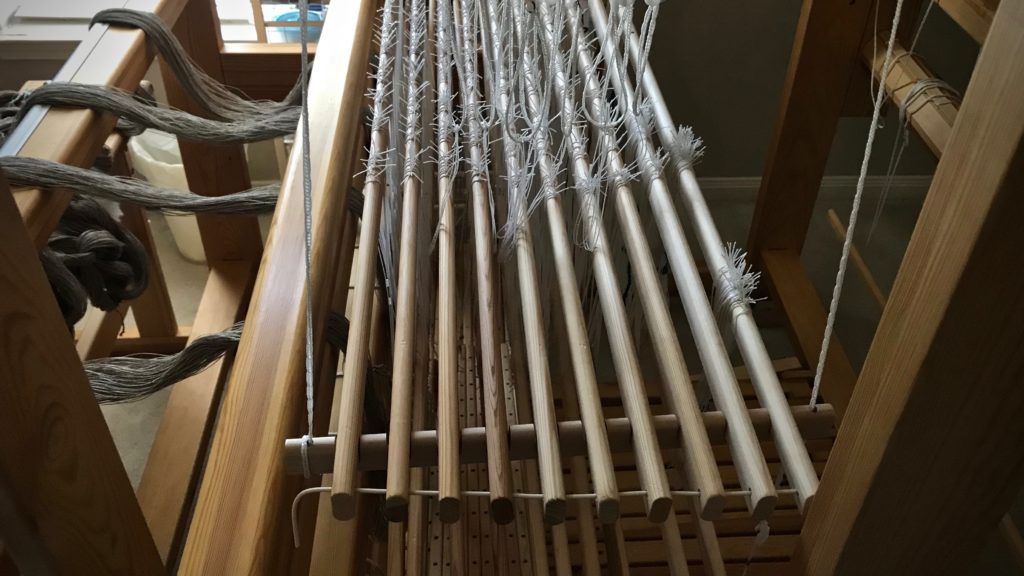As much as I tried to look under the warp to see it, I could not get a decent view of the reverse side of the fabric. Until now. I am overjoyed to see that this gray and blue warp is even better than I had imagined. As the first towel on the warp rounds the cloth beam I see a silver-like glimmer behind the cursive “Peach,” and shiny blue loveliness at the borders.
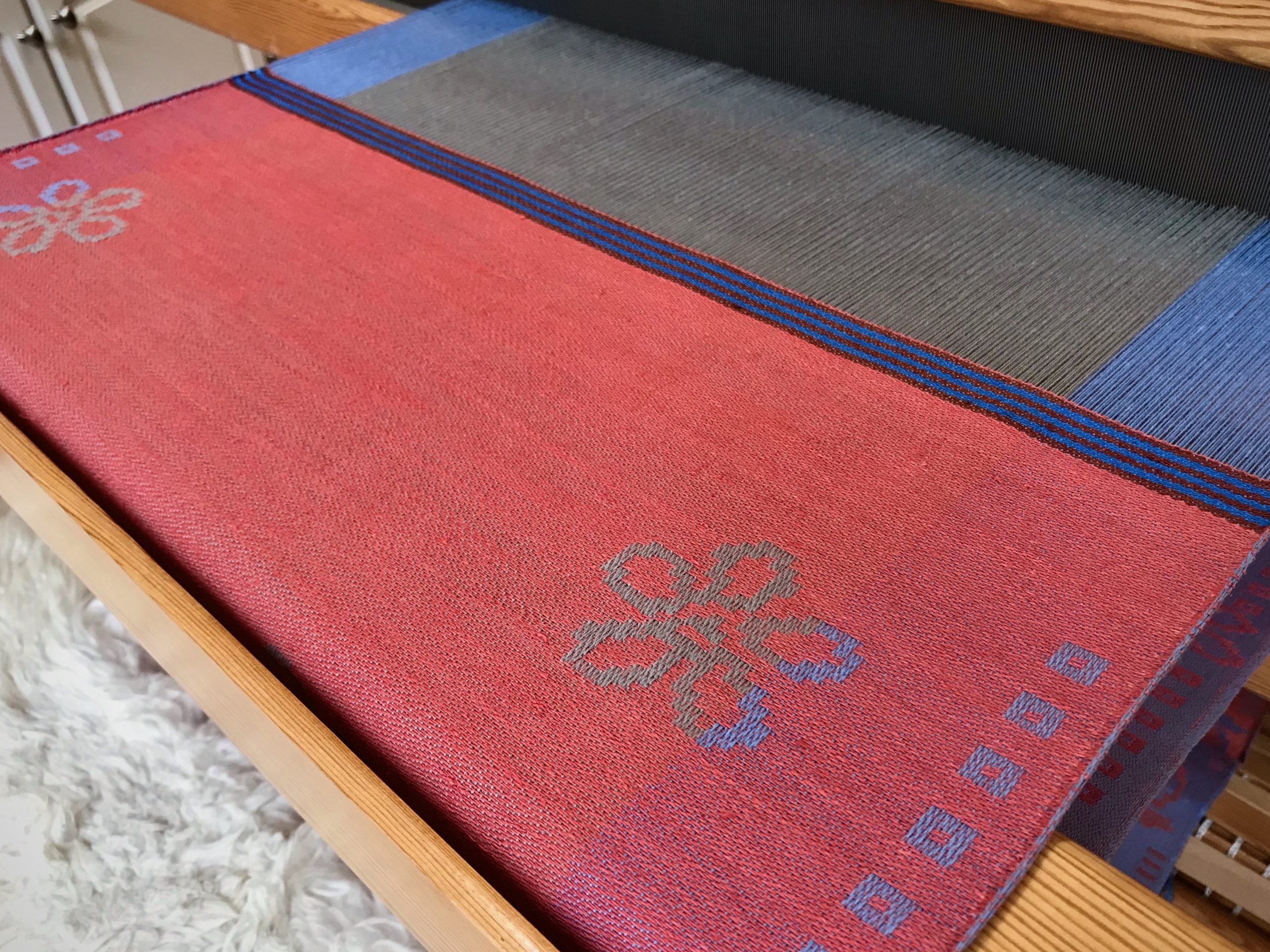
Yet, this is but a fleeting glimpse. Oh, drawloom, you make me wait sooo long to see what I have woven. In that waiting, I continue to weave, content with the process. The towels that will result will last a very long time. That makes every minute at the loom time well spent.
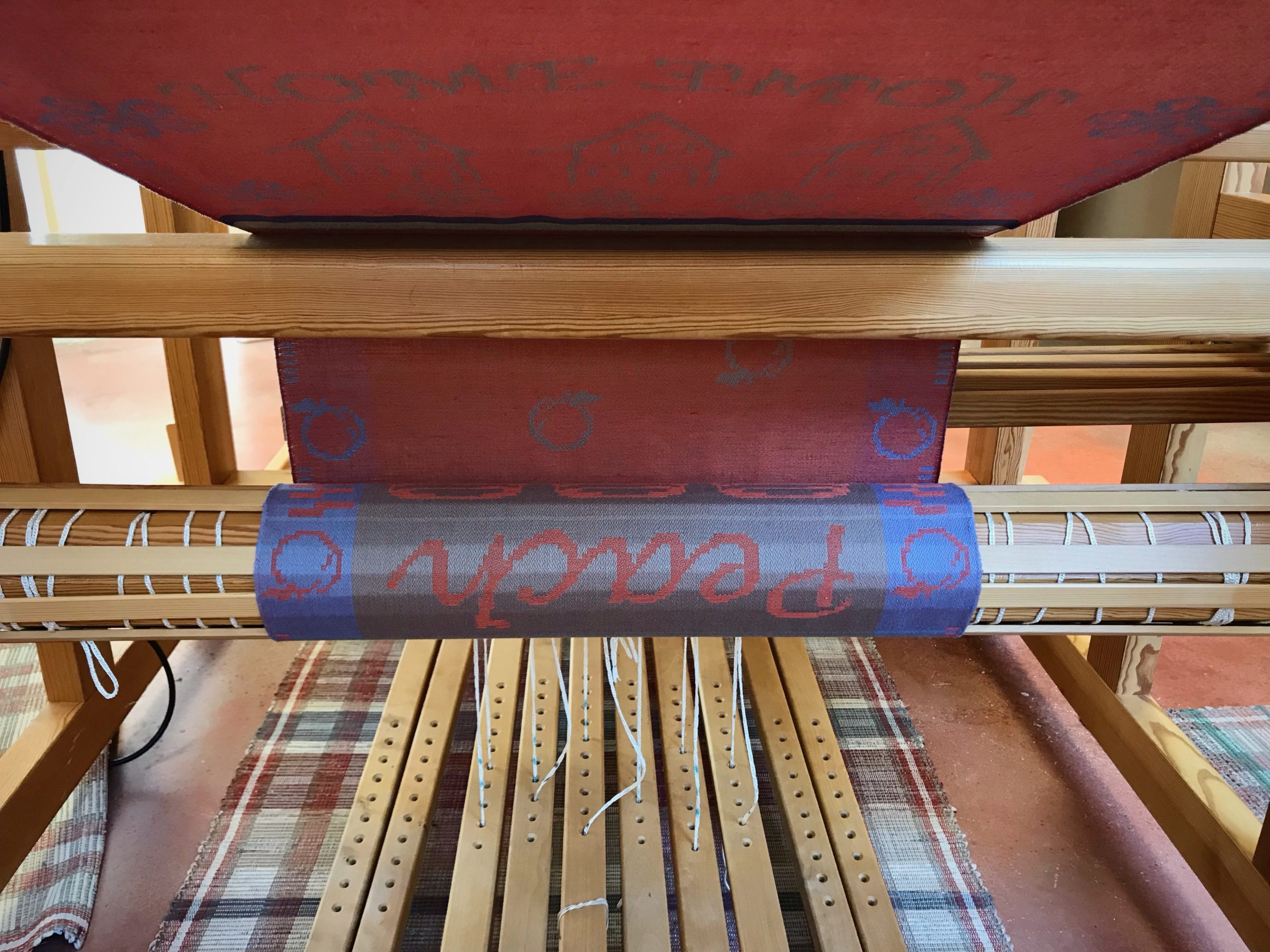
We work and work for things that are temporary. Even the most spectacular drawloom-woven towels wear out eventually. God has placed eternity in our hearts. We know there’s more to life that these fleeting days. Eternity gives meaning for today. The full scope of what God is doing is beyond our here-and-now comprehension. But at times, when we are given a glimpse into his wondrous mysteries, we are assured that eternity with him will far surpass our brightest imaginations.
May your days be full of meaning.
Happy Weaving,
Karen











